Are you struggling with gynecomastia? At the New York Liposuction Center, we’re here to help you with your goals.
When excess breast tissue and fat affect your chest, gynecomastia surgery can help restore a more masculine appearance. This procedure combines glandular tissue removal and liposuction to address the causes of gynecomastia and the fat that contributes to the condition.
- Gynecomastia: Targets and removes excess glandular tissue responsible for the breast enlargement
- Liposuction: Removes excess fat around the chest, refining the contours to create a more defined appearance
I understand that gynecomastia can cause both physical and emotional discomfort. I focus on achieving natural-looking results that help you regain confidence and feel more comfortable in your body.
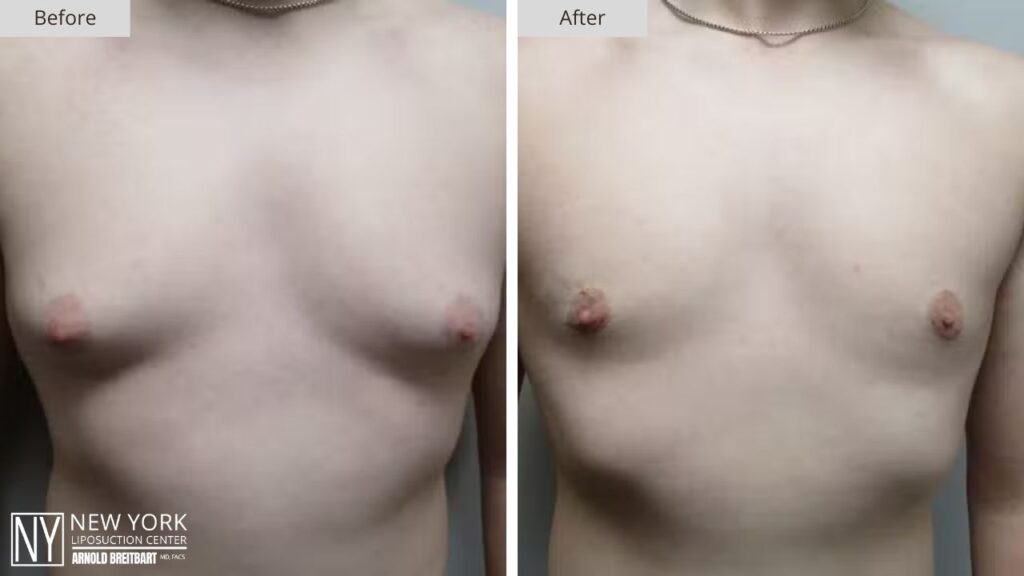
Liposuction for Fat Removal
In some cases, the chest enlargement caused by gynecomastia is primarily due to excess fat tissue. When this is the case, liposuction can be an excellent solution.
Liposuction uses advanced techniques, such as VASER or SmartLipo, to break down and liquefy fat cells before gently suctioning them out. This provides a contoured, masculine chest with minimal scarring and downtime.
Benefits of Liposuction
- Effective fat removal: Targets areas of stubborn fat around the chest, leaving a smooth, defined contour
- Minimal scarring: Small, inconspicuous incisions are made, typically hidden around the areola
- Quick recovery: Compared to more invasive methods, liposuction offers a quicker healing process with minimal discomfort
Glandular Tissue Removal
However, liposuction alone may not be sufficient when glandular tissue is present (which is often the case with gynecomastia). Glandular tissue is firmer and cannot be easily removed through liposuction alone.
For cases with significant glandular involvement, an excision procedure is necessary. During excision, we make a small incision around the areola and carefully remove the excess glandular tissue.
Why Excision Is Needed
- Targets glandular tissue: While liposuction removes fat, excision addresses the firm, glandular tissue
- Improved aesthetic results: Removal of glandular tissue ensures that the chest is completely flat and contoured
- Reduced risk of recurrence: Excision helps ensure that glandular tissue does not regrow, which reduces the risk of gynecomastia returning
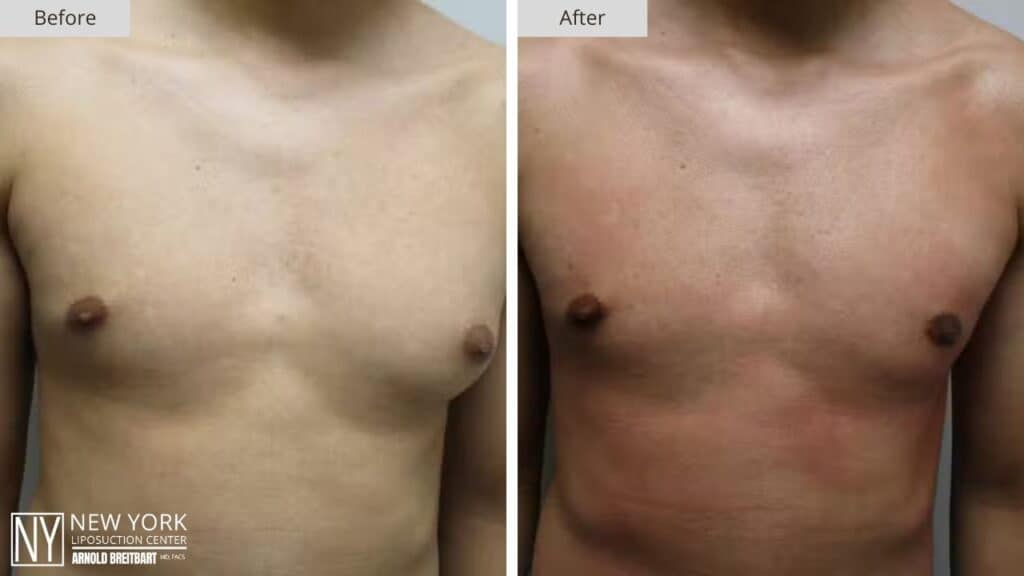
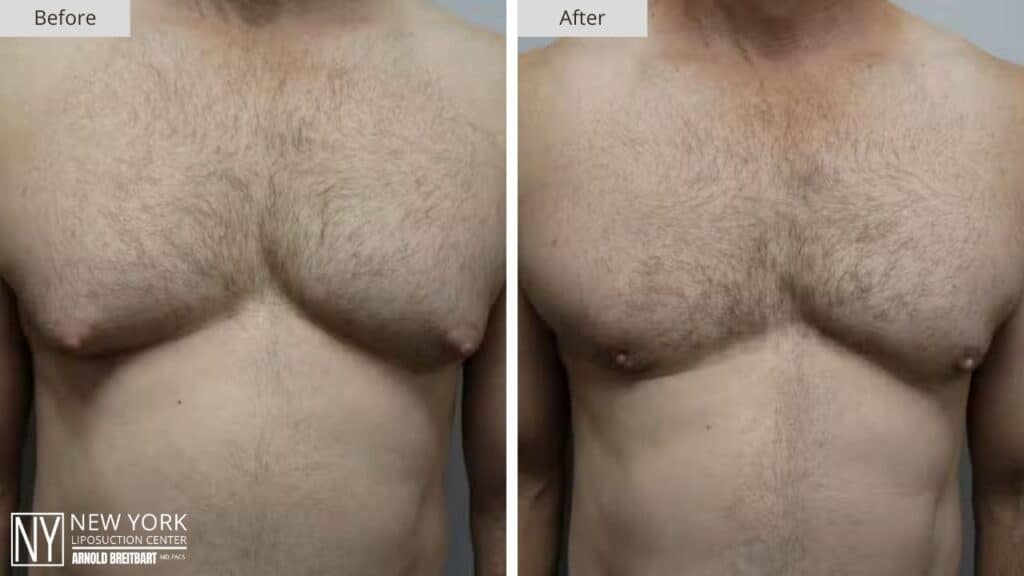
Combining Liposuction and Excision
For many men suffering from gynecomastia, the combination of liposuction and excision is the most effective solution. Liposuction can address excess fat, while excision can remove stubborn glandular tissue. By combining the two techniques, the result is a flatter, more defined chest that looks natural and masculine.
Advantages of Combining Both Treatments
- Comprehensive treatment: Addresses both the fatty and glandular components of gynecomastia
- Customized results: Our surgeon can tailor the procedure to the specific needs of your chest, whether it’s more fat or more glandular tissue
- Smoother, more sculpted appearance: By removing both fat and glandular tissue, you get a contoured chest that appears firm and natural
The combination approach is ideal for moderate to severe cases of gynecomastia or when both fat and glandular tissue are contributing to the chest enlargement. We can complete the procedure in one session to ensure minimal disruption to your daily life.
Recovery and Results
One of the greatest benefits of male liposuction and excision is the short recovery time. Liposuction is minimally invasive, and when combined with excision, patients typically experience a quick recovery.
Post-Procedure Expectations
- Post-procedure swelling and bruising are normal but usually subside within a few days to weeks.
- A compression garment is often recommended to reduce swelling and help shape the chest.
- Most patients can return to light activities within a few days, but strenuous exercise should be avoided for 1-2 weeks.
You will often see the results of combining liposuction and excision within weeks, with the final shape becoming evident after 1 to 2 months. A well-defined chest is achievable, giving you the confidence to feel great in your own skin.
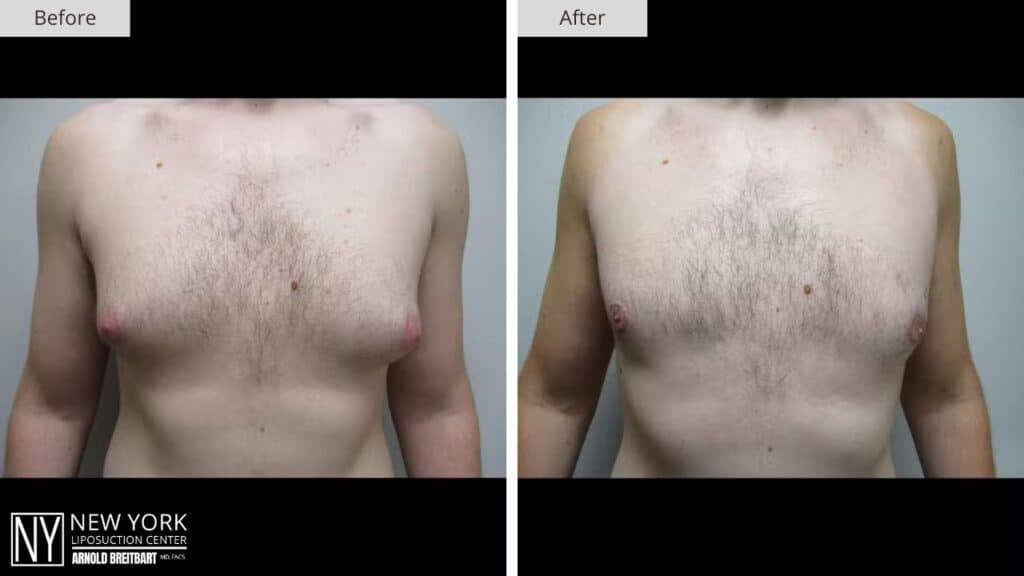
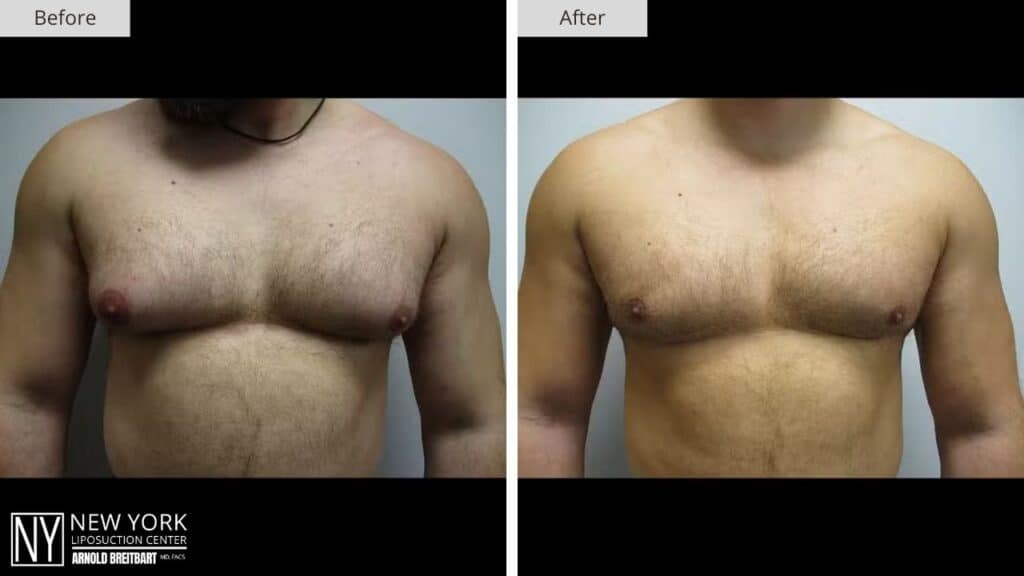
Why Combining Both Techniques Works Best
Each gynecomastia case is unique, and it’s important to choose the right combination of techniques for your specific situation.
While liposuction is excellent for removing fat, excision is necessary for removing glandular tissue. This is especially so in cases where the fat is dense or the glandular tissue is significant. By combining both, I ensure that both components are addressed for the best possible outcome.
By choosing the combination of liposuction and excision, you’re investing in a more permanent, effective solution to gynecomastia. With a sculpted chest and reduced risk of recurrence, you can feel more confident in your body and enjoy results that last.
Schedule a Free Consultation
Fill out the form or at call us at (917) 809-7787 to schedule your free consultation with the New York Liposuction Center and get started on your liposuction journey.